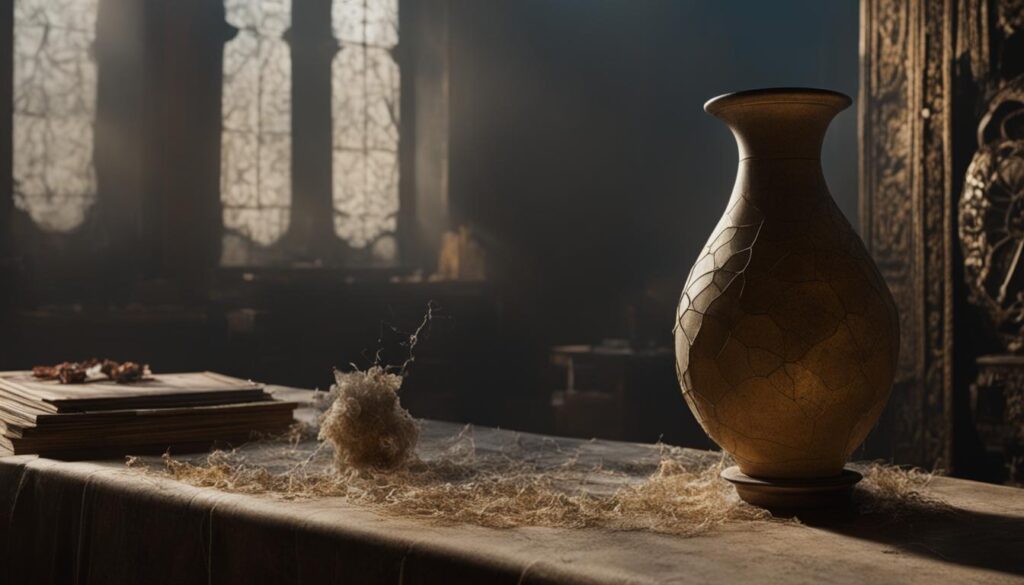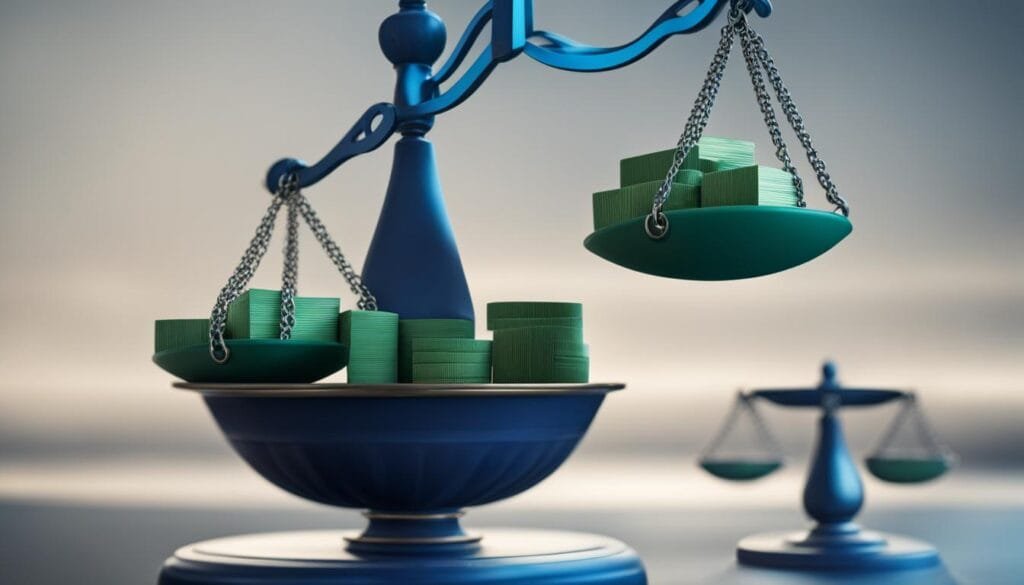Collectibles have long been sought after by investors looking for alternative assets to diversify their portfolios. From art and antiques to stamps, coins, and even comic books, rare and unique items have the potential to appreciate in value over time. However, it’s important to approach investing in collectibles with caution and a thorough understanding of the market.
When it comes to investing in collectibles, it’s crucial to remember that their value is subjective and not guaranteed to increase. While some collectibles may fetch high prices and have compelling success stories, this is not representative of the entire market. It’s essential to conduct thorough research and consider the individual characteristics of each collectible before making any investment decisions.
Key Takeaways:
- Collectibles are rare and unique items that have the potential to appreciate in value over time.
- Investing in collectibles should be approached with caution and a thorough understanding of the market.
- Thorough research and consideration of the individual characteristics of each collectible are essential before making investment decisions.
- While some collectibles may have compelling success stories, it’s important to remember that these are not representative of the entire market.
- Investing in collectibles offers the potential for portfolio diversification and personal enjoyment, but it also comes with risks and challenges.
What Are Collectibles?
Collectibles are items that hold value beyond their original sale price. They can encompass a wide range of items, including art, antiques, stamps, coins, toys, and comic books, among others. These items are often sought after by collectors and enthusiasts due to their rarity and uniqueness. The appreciation of collectibles depends on various factors, such as the demand, condition, and historical significance of the item.
One example of a highly valued collectible is the stainless steel sculpture titled “Rabbit” by Jeff Koons, which sold for a staggering $91.1 million in 2019. This piece is a prime example of how rare and sought-after collectibles can command exceptionally high prices in the market. Nostalgia also plays a significant role in the value of collectibles, as many people are willing to pay a premium for items that hold sentimental value or remind them of a specific era.
It’s important to note that investing in collectibles carries risks. While some items may appreciate in value over time, there’s no guarantee of a return on investment. Additionally, the value of collectibles is subjective and can fluctuate based on market trends and changes in consumer preferences. Collectibles should be approached with a cautious mindset, and thorough research should be conducted before making any investment decisions.
| Types of Collectibles | Appreciation of Collectibles |
|---|---|
| Art | Nostalgia |
| Antiques | Condition |
| Stamps | Demand |
| Coins | Historical Significance |
| Toys | |
| Comic Books |
Collectibles as Alternative Investments
When it comes to investing, collectibles offer an attractive option as alternative investments. Unlike traditional assets such as stocks and bonds, collectibles possess unique characteristics that can provide diversification to an investment portfolio. However, it’s important to understand that investing in collectibles comes with its own set of risks and considerations.
One key advantage of collectibles as alternative investments is their ability to offer diversification. As collectibles are not correlated with traditional assets, their value is often influenced by factors such as rarity, demand, and popularity. This means that even in times when stock markets or other traditional assets may be experiencing volatility, the value of certain collectibles may remain stable or even increase.
However, it is crucial to note that investing in collectibles also carries risks. Unlike stocks or bonds, the value of collectibles is subjective and based on buyers’ perceptions and tastes. This makes their value temporary and potentially volatile. Additionally, the collectibles market can be subject to fraud, with counterfeit items being sold, and the markups charged by collectibles dealers can significantly impact the potential returns.
| Advantages of Investing in Collectibles | Downsides of Investing in Collectibles |
|---|---|
|
|
Considering these factors, it is essential for investors to thoroughly research and evaluate the characteristics of each collectible before making an investment decision. Historical performance, condition, authenticity, and provenance are among the key factors to consider when assessing the investment potential of a collectible. The expertise of appraisers, knowledge from reputable sources, and market trends can also be valuable tools for making informed investment choices in the collectibles market.
Potential Rewards of Investing in Collectibles
When it comes to investing in collectibles, there is the potential for significant rewards. Certain items have experienced remarkable appreciation in value, providing impressive returns for collectors. For example, Star Wars collectibles have seen increases of thousands of percent in value, and the first edition of The Amazing Spider-Man comic sold for an impressive $1.1 million. These success stories demonstrate the potential for substantial financial gains in the world of collectibles.
However, it’s important to note that these examples are not representative of all collectibles. Each item has its own unique characteristics and market dynamics. Investing in collectibles requires careful research and consideration to identify items with the potential for appreciation in value. Collecting rare and unique items can be a thrilling pursuit for those with a passion for the hobby.
“Collecting is such an interesting way to combine personal passion with potential financial rewards. It’s like having a tangible piece of history in your hands, and if it appreciates in value over time, it’s an added bonus.” – Collectibles Enthusiast
While there is potential for financial gain, it’s essential to recognize that investing in collectibles carries risks. Not all items will appreciate in value, and the collectibles market can be subject to fluctuations. The value of collectibles is subjective and relies on the tastes and perceptions of buyers and sellers. It’s crucial to approach investing in collectibles with a long-term perspective and a willingness to carefully evaluate each potential purchase.
| Collectible Item | Appreciation in Value |
|---|---|
| Star Wars collectibles | Thousands of percent |
| The Amazing Spider-Man first edition comic | $1.1 million |
Investing in collectibles can be an exciting and potentially lucrative endeavor for those who approach it with knowledge, research, and a discerning eye. By understanding the market and carefully selecting items, collectors have the opportunity to enjoy both personal fulfillment and the potential for financial success.
Advantages of Investing in Collectibles
Investing in collectibles offers several advantages that make it an appealing option for those looking to diversify their investment portfolio and enjoy a tangible asset. Here are some key advantages of investing in collectibles:
1. Diversification:
Collectibles provide an opportunity to diversify your investment portfolio beyond traditional assets like stocks and bonds. By investing in unique and rare items, you can reduce the risk of exposure to the volatility of the stock market and potentially enhance your overall portfolio performance.
2. Portability:
Unlike other forms of investment, collectibles are physical assets that can be easily transported and sold globally. This makes them a convenient investment option for individuals who prefer to have more control over their investments and want the flexibility to buy and sell their items as they please.
3. Passion and Nostalgia:
Investing in collectibles allows individuals to pursue their passions and interests. Whether it’s art, toys, or comic books, owning collectibles can bring personal satisfaction and enjoyment to collectors who have a genuine love for these items. Additionally, collectibles often evoke a sense of nostalgia, attracting both collectors and buyers who appreciate the emotional connection these items hold.
4. Easy Access:
Thanks to the rise of online marketplaces like eBay, it has become easier than ever for collectors to find and acquire the items they desire. These platforms offer a wide variety of collectibles, making it convenient for investors to explore different options and expand their portfolios with just a few clicks.
Investing in collectibles offers a unique opportunity to combine financial gain with personal interest. However, it’s important to approach this investment strategy with caution and consider the risks involved, such as the potential for fraud, markups, lack of liquidity, and storage and insurance costs. By understanding the advantages and drawbacks, investors can make informed decisions when venturing into the world of collectibles.

Downsides of Investing in Collectibles

While investing in collectibles can be exciting and potentially profitable, there are several downsides that investors should be aware of. These include:
- Fraud: The collectibles market is susceptible to fraud, with counterfeit items being sold. It’s important for investors to thoroughly research and authenticate the items they are interested in purchasing.
- Markups: Collectibles dealers often mark up prices for profit, which can make it challenging for investors to find items at fair market value. Comparing prices and negotiating with dealers may be necessary.
- Tough Comps: Comparing the current value of a collectible to previous sales can be difficult due to factors such as condition, rarity, and trends in the market. This lack of standardized valuation can make it challenging to accurately assess the potential value of an investment.
- Lack of Liquidity: Collectibles can be illiquid assets, meaning that finding a buyer willing to pay the desired price can be difficult. This lack of liquidity can make it challenging to sell a collectible when desired or needed.
- Damage: Collectibles are often fragile and can be easily damaged, diminishing their value. Investors must take precautions to protect their items from potential harm.
- Storage and Insurance Costs: Collectibles require proper storage to maintain their condition and value. Additionally, investors may need to purchase insurance coverage to protect against loss or damage.
- No Income Stream: Unlike traditional investments like stocks or real estate, collectibles do not generate income. Investors must rely solely on the potential appreciation in value when considering their return on investment.
Overall, investing in collectibles requires careful consideration of the potential risks and downsides. It is important for investors to do thorough research, seek expert advice when needed, and diversify their investment portfolio to mitigate some of the risks associated with collectible investments.
Tax Implications of Investing in Collectibles
When it comes to investing in collectibles, it’s important to understand the tax implications that may apply. The sale of collectibles can trigger capital gains tax, which is the tax on the profit made from selling an asset. However, the tax treatment of collectibles is different from that of traditional investments like stocks and bonds.
For collectibles owned for more than a year before being sold, the maximum long-term capital gains tax rate is 28%. This rate is higher than the 15% capital gains tax rate that applies to most traditional investments. It’s important to keep this higher rate in mind when calculating potential tax liabilities.
On the other hand, if collectibles are owned for less than a year before being sold, they may be subject to taxation at the ordinary income tax rate. This means that the profit from selling collectibles would be taxed at the same rate as your regular income. It’s crucial to consult with a tax professional to determine your specific tax obligations based on your individual circumstances.
| Ownership Duration | Tax Rate |
|---|---|
| More than 1 year | Maximum 28% long-term capital gains tax rate |
| Less than 1 year | Taxed at ordinary income tax rate |
It’s important to keep detailed records of your collectible purchases, including the purchase price and any associated fees. These records will be necessary for calculating your basis, which is the amount used to determine your taxable gain or loss when you sell the collectible. By understanding the tax implications of investing in collectibles, you can make more informed decisions and manage your tax obligations effectively.
Conclusion
Investing in collectibles can be an exciting venture for those who have a genuine passion and knowledge of the items they collect. However, it’s crucial to approach collectibles as alternative investments with caution. While they can provide diversification and personal enjoyment, there are inherent risks to consider.
Firstly, the value of collectibles is subjective and not guaranteed to increase. The market for collectible assets can be unpredictable, making it essential to carefully evaluate each potential investment. Additionally, the collectibles market is susceptible to fraud, and it can be challenging to determine the authenticity of certain items.
Furthermore, collectibles often lack the liquidity that traditional assets offer. Finding a buyer who is willing to pay the desired price may prove difficult, potentially resulting in a more extended holding period. Lastly, potential tax implications should be considered, as the sale of collectibles may lead to higher tax rates compared to traditional investments.
FAQ
What are collectibles?
Collectibles are items that hold value beyond their original sale price. They can range from art and antiques to stamps, coins, toys, and comic books.
Are all collectibles considered investments?
No, not all collectibles are considered investments. While some collectibles have the potential to appreciate in value, the value of collectibles is subjective and not guaranteed to increase.
What are the advantages of investing in collectibles?
Investing in collectibles offers advantages such as portfolio diversification, personal enjoyment, and the potential for future popularity and value appreciation.
What are the downsides of investing in collectibles?
The downsides of investing in collectibles include the potential for fraud, markups by dealers, lack of liquidity, potential damage, storage and insurance costs, and the absence of an income stream like stocks or real estate.
How are collectibles taxed?
If owned for more than a year, collectibles may be subject to a maximum long-term capital gains tax rate of 28%. Selling collectibles owned for less than a year can result in taxation at the ordinary income tax rate.
Should I invest in collectibles?
Investing in collectibles should be approached with caution. While some rare collectibles have provided significant returns, the value and market for collectibles can be volatile and uncertain. Individual characteristics of each collectible should be carefully considered before making an investment decision.
Are Real Estate Investments More Profitable Than Investing in Collectibles?
When comparing profitability, one may wonder if real estate investment opportunities outweigh investing in collectibles. While collectibles can offer unique appeal, real estate tends to provide more sustainable returns. The property market offers a variety of income streams, such as rental income and property value appreciation, making real estate investments a potentially more lucrative option.


Pingback: Investing in Art and Collectibles: Navigating the World of Tangible Assets – Straight Fire Money